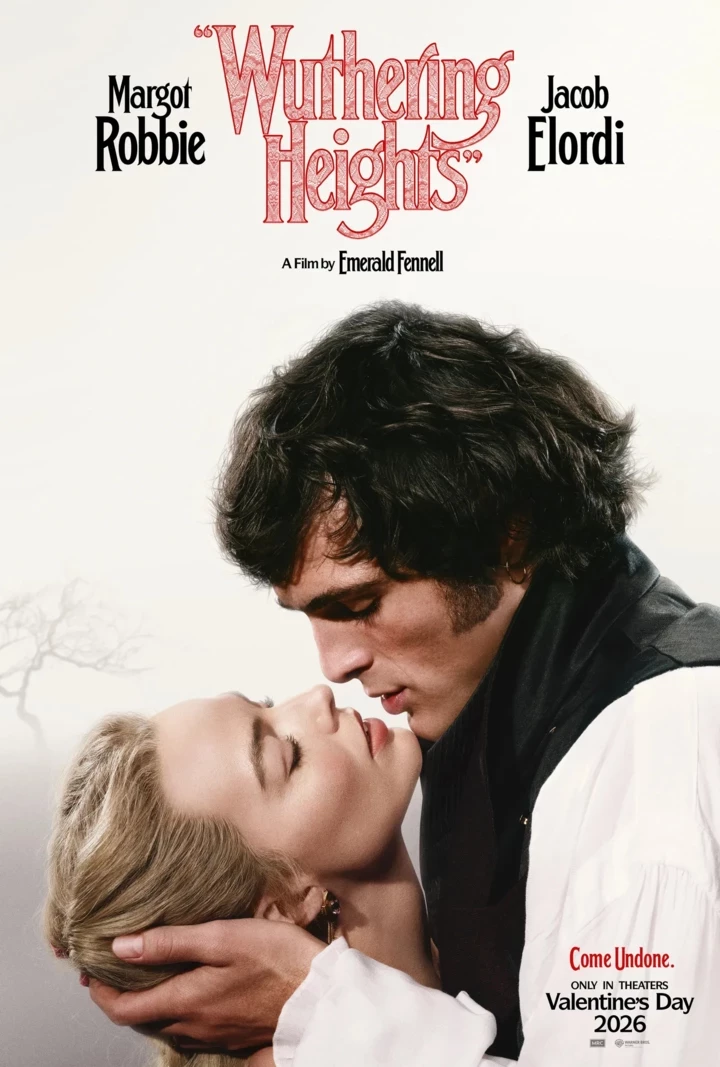
Save this storySave this storySave this storySave this story
Whenever I’m asked to provide a “fun fact” about myself, I usually say that I worked as a smooth-jazz radio announcer back in college. It wasn’t the kind of unsuitable, faintly ironic part-time job one falls into as a student but, rather, the culmination of years of serious and directed effort. In fact, I’d been seeking professional entry into the world of smooth jazz since adolescence: as a high schooler in the suburbs of Seattle, I made weekly rounds through the used-CD shops of University Way to build my personal library of artists from the smooth-jazz world; I frequented Dimitriou’s Jazz Alley, where practically all of those artists played, as a young Gen X-er might have hung out at punk clubs; I even persuaded the local smooth-jazz radio station to take me on as an intern. For all that, I’d never have claimed to like smooth jazz.
“I hate ‘classical music,’ ” Alex Ross once wrote in this magazine—“not the thing but the name.” I could say the same about “smooth jazz,” which I’ve always considered primarily a marketing term, the label not of a musical genre but of a commercial radio format. In Penny Lane’s “Listening to Kenny G,” a 2021 documentary about the saxophonist whose music—even more melodic and hooky than than those of his pop-jazz predecessors, such as George Benson and Grover Washington, Jr.—defined that format, the industry consultant Allen Kepler recalls how that label came about. Conducting focus groups with the market-research firm Broadcast Architecture in the late nineteen-eighties, Kepler asked participants to describe music like Kenny G’s however they liked. One woman, Kepler says, had the perfect answer: “She’s thinking. She says, ‘It’s jazz.’ She says, ‘It’s smooth jazz.’ It was almost like it just came to her like a lighting bolt.”
Not only did I know full well how far I was outside smooth jazz’s middle-aged core demographic but I used it to my advantage: taken aback by the sight of a long-haired teen-ager in the autograph line after a concert, most musicians proved willing to chat, if only to satisfy their curiosity about how I’d ended up there. (In a way, this prepared me for the life I now lead in South Korea, where locals tend to react to my presence with a similarly amiable bewilderment.) This often happened at the multi-artist smooth-jazz festivals that I attended all over the West Coast, whose crowds underscored another difference between myself and one of its core listener bases. Despite taking place in parts of the country not known for their Black populations—venues included the Hyatt Regency Newport Beach and the Chateau Ste. Michelle Winery, in Woodinville, Washington—they attracted large Black audiences.
This surprised me at first, but it also meant that, even if the music played on smooth-jazz stations—personified, then as now, by Kenny G—was regarded as hopelessly uncool, it at least couldn’t be dismissed as “too white.” In whatever terms it was cast, this kind of widespread, undisguised disdain encouraged me publicly to disavow enthusiasm for smooth jazz, but it also gave me considerable secret satisfaction. Associating myself with the least rebellious music imaginable felt like its own act of defiance—defiance of expectations about the proclivities of the young in general, and of my generation in particular. I recall American high-school students around the turn of the millennium being generally assumed to side with one of two fields of popular music: rock, especially alternative rock (the most popular radio format of the day), or hip-hop, especially gangsta rap and its offshoots, with only the aggressively lumpen hybrid of nu metal between them.
The emotional spectrum of these genres, running from depressive rage to thuggish braggadocio, felt preposterously far removed from my life and the lives of my middle-class suburban peers. As a result, I didn’t start listening to music seriously until the relatively late age of fifteen. An aunt and uncle had sent me a Tower Records gift card for Christmas, and making sure it didn’t go to waste meant finding something to buy that wouldn’t embarrass me. Only when I got to the store and started flipping through CDs did a name occur to me: Acoustic Alchemy, a British instrumental group fronted by two guitarists, one playing steel strings and the other nylon. I remembered enjoying their albums at the age of five or six, when my dad (a record-loving boomer possessed of what then seemed to me an impossibly vast collection) put them into our dinner-music rotation.
Even for sworn enemies of smooth jazz, Acoustic Alchemy’s music isn’t particularly objectionable. Though they received airplay on smooth-jazz radio, they established themselves before the format crystallized, which may explain why they didn’t over-accommodate their sound to its conventions, never using a saxophone on more than two or three tracks per album, or making the standard move of covering a nineteen-seventies soul hit. (Perhaps as a result, their music travels well; still, it induced a bit of vertigo to hear “Same Road, Same Reason,” a song I knew from countless childhood meals, used to announce the last stop on South Korea’s high-speed train.) A fan such as myself might also add that Greg Carmichael, Acoustic Alchemy’s longest-tenured member, studied classical guitar at the London College of Music, but in smooth jazz impeccable musicianship is table stakes. “You want to play like the smooth-jazz guys?” my guitar teacher joked when I started taking lessons. “You and me both.”
Detractors count this as yet another sin, an excess of technical proficiency with “nothing to say.” I even remember hearing such judgments expressed in a lecture hall: when, in my first semester at the University of California, Santa Barbara, my Introduction to Music Theory instructor went on a tangent about the nylon-string noodling heard in “crappy smooth jazz,” I felt like a fresh arrival from a small Bible Belt town hearing a biology professor ridicule Genesis. I’d actually applied to U.C.S.B. intending to launch my smooth-jazz broadcasting career at its campus radio station. (It didn’t hurt that the school’s mascot, the Gaucho, shared the name of the Steely Dan album with “Hey Nineteen,” the most transgressive of all smooth-jazz radio staples.) Acoustic Alchemy had been the gateway drug to harder stuff, which is to say smoother stuff—David Sanborn, Spyro Gyra, the Rippingtons, Fattburger—and I intended to play it all on the air.
Actually doing so drew contemptuous reviews from student evaluators, but it also got me recruited into the big leagues, at least within the minor radio market of Santa Barbara. The program director at KMGQ, the local smooth-jazz station, heard my college radio show and called me up to say that he wanted me to be his new evening announcer. Only when I started the job did I realize that the role came with no influence over the music played during my shifts. I needed only concern myself with making announcements—always both commenced and ended, quasi-militarily, with the slogan “Magic 106.3, the Sound of Santa Barbara”—between preprogrammed blocks of commercials and songs. Sometimes those songs were by artists I genuinely liked; sometimes they were by artists like Kenny G, from whom I’d always exaggeratedly distanced myself.
Still, having turned pro at twenty years old, I figured I’d soon be writing my own ticket; before long, it would surely be me hosting 94.7 the Wave’s Smooth Jazz Sunday Brunch at i. Cugini, in Santa Monica. But I wasn’t experienced enough to recognize the signs of trouble ahead at KMGQ, which operated with such a skeleton crew that I was alone in the building nearly every night. Within a few years, a new general manager swooped in from somewhere in Wyoming, announcing his intentions to make big changes—changes that eventually turned out to involve eliminating the station’s on-air staff and switching over to classic rock. I thought back to KWJZ, the Seattle smooth-jazz station where I’d interned in high school. “You’ll get a job in radio,” its drive-time announcer assured me in the break room as he salted his grocery-store roasted chicken. “People get sick of this industry.”
He meant, I think, that a place would sooner or later be vacated for me by the next on-air professional to burn out from the unpredictable but inevitable changes of management or format endemic to commercial radio. Knowing they could at any time have to gin up enthusiasm for Supertramp or relocate to Poughkeepsie, announcers tended to exude an agnostic detachment from the content of their broadcasts. (Some gave the impression of perpetually scanning the horizon for a new career. KWJZ’s morning announcer, a competitive bodybuilder by night, later moved to Los Angeles and started over as an actor, playing police officers and other glowering authority figures.) Few of the people I met in smooth-jazz radio showed much interest in discussing, say, whether Lee Ritenour or Larry Carlton was the better guitarist in Fourplay; most expressed neither taste nor distaste for the soundtrack of their working lives.
In that sense, smooth-jazz announcers had the same relationship to the music as many of their listeners did. The format “was something that everybody could agree on in the office,” Pat Prescott, the host for decades of the Wave’s morning show, says, in “Listening to Kenny G.” “No one was going to be offended by anything that you hear.” In 2014, I interviewed Dan Kuramoto, a founding member of the band Hiroshima, whose music was often heard on smooth-jazz stations in the nineteen-eighties and nineties. He remembered one consultant from Broadcast Architecture advising him how best to compose for the format: “If you were a secretary working in an office building, and it was three or four o’clock in the afternoon, what could be played on the radio that might enhance your mood ever so slightly, but you never stop to think about what you’re listening to?”
This pressure to program for the broadest, least attentive listenership possible could lead to absurdity. Hiroshima was founded in the mid-seventies with a sound built around the koto, a distinctively Japanese-sounding stringed instrument. A couple of decades later, Broadcast Architecture, speaking for the stations it worked with, told Kuramoto, “We’ll happily play you, but do you have to have that koto thing?” This corporate complaint made him realize that smooth jazz had devolved into “the next form of easy listening, or what we used to call ‘elevator music,’ although I think earlier elevator music was more interesting than what smooth jazz became.” He and the rest of Hiroshima weren’t alone in feeling “great disdain” for the format; “No One Sets Out to Be a Smooth Jazz Musician,” the headline of an article, written in the persona of a fictional saxophonist stage-named Michael Langello, declared in the Onion, in 2007.
That same year, smooth jazz went into decline. KMGQ, in Santa Barbara, where I’d been an announcer, changed formats in September of 2010; KWJZ, in Seattle, where I’d interned, followed suit three months later. The Wave, in Los Angeles, long the format’s standard-bearer, had already dropped all references to “smooth jazz” from its branding early in that same year. The sudden disappearance of smooth jazz from America’s airwaves has been widely ascribed not to popular rejection but to a characteristically capricious shift in industry practice. What happened in 2007 was the introduction of the Portable People Meter, or P.P.M., by the then dominant consumer-research firm Arbitron. The P.P.M. was a pager-like ratings-collection device that was designed to automatically track signals encoded in commercial radio broadcasts, and it promised great gains in accuracy over the listening diaries that audiences had previously filled in by hand, but it also registered an immediate and precipitous drop in the ratings of certain formats.
“Smooth jazz may have suffered more than other types of radio,” FiveThirtyEight’s Carl Bialik writes, “because its soft sound didn’t leave much room under which to tuck audio signals while keeping them inaudible.” Its very appeal as background music could thus have been its undoing. Long an object of harsh criticism from jazz purists, such optimization for passive listening now finds more acceptance from listeners too young to have caught smooth jazz’s first wave, and whose enthusiasm for streaming mixes of “chill vibes” and “beats to study to” suggests an appreciation for music that induces and sustains a relaxed yet mildly alert psychological state. This same generation has propagated the micro-genre of vaporwave, with its slowed-down, glitched-up audiovisual collages of slick late-eighties and early-nineties marketing aesthetics. Vaporwave creators often make use of actual smooth-jazz tracks, valuing, rather than ridiculing, their association with media outlets such as the Weather Channel.
When I first encountered vaporwave, I felt like a disco habitué listening to early hip-hop—so familiar was each and every sample. More than a few came from, and indeed made me feel somewhat more receptive to, the œuvre of Kenny G. (It helped that vaporwave favors his early collaborations with the R. & B. producer Kashif, the only Kenny G albums I could ever abide.) Others let me hear anew artists I remembered more fondly from my smooth-jazz radio days: the Rippingtons, for example, whose exuberant, tropical-flavored 1989 album, “Tourist in Paradise,” imbues certain vaporwave tracks with what’s now called a whole vibe. During COVID quarantine last year, I listened through the Rippingtons albums I’d missed over the previous decade and was surprised by their varied texture and instrumentation, their cinematic compositions, their near-total lack of saxophone, and much else of which Broadcast Architecture would surely have disapproved back in the nineties.
Although none of this will put the Rippingtons on the cover of The Wire, further listening has revealed to me that they aren’t the only smooth-jazz radio stars to have benefitted artistically from the dissolution of the format and its restrictions. Whether they’ve benefitted financially is another, more doubtful, question. At its height, smooth jazz was a life-style-driven format associated with comfortable, if not extravagant, affluence, as evidenced by the popularity of smooth-jazz cruises. Some of these floating festivals continue to sail to their usual ports of call—Fort Lauderdale, Cozumel, Nassau—even in a world without the infrastructure of terrestrial smooth-jazz radio, which now looks like a predictable casualty of the global financial crisis of the late two-thousands. “It’s not only the demise of smooth jazz,” the guitarist Gil Parris, quoted by JazzTimes, in 2019, says. “I think it’s the demise of the middle class, the middle ground of music, period.”
The rise and fall of smooth jazz reflects economic conditions, but also generational ones. Conceived in the nineteen-eighties, the format grew with promising swiftness in the nineties. Throughout most of the two-thousands, and even while drawing resentment from some quarters, it nevertheless seemed assured long-term success. By the middle of the following decade, however, it had somehow been consigned to virtual irrelevance. Though few of my fellow-millennials came of age in a smooth-jazz world, we can all see the parallels between its trajectory and that ascribed to our generation, more than a few of whose members spent their youths preparing to join institutions only to have those institutions collapse upon their arrival. My own career in smooth jazz came to an end in 2008, but at least I still had my backup dream: to become the editor of a newspaper book-review supplement. ♦
Sourse: newyorker.com







